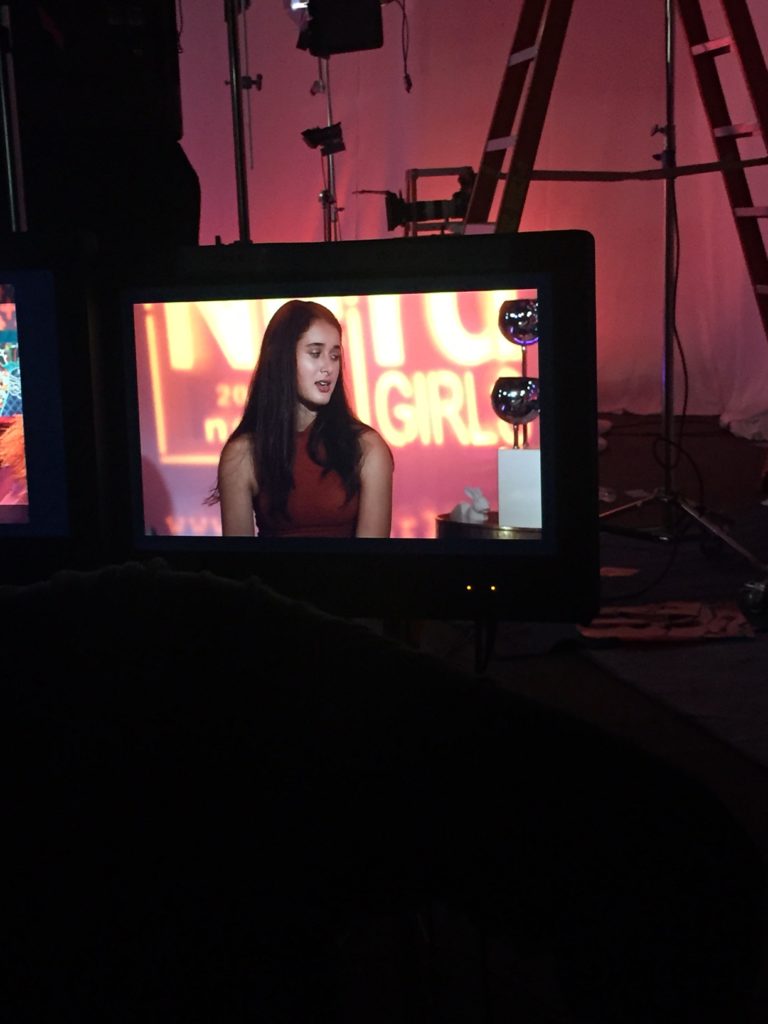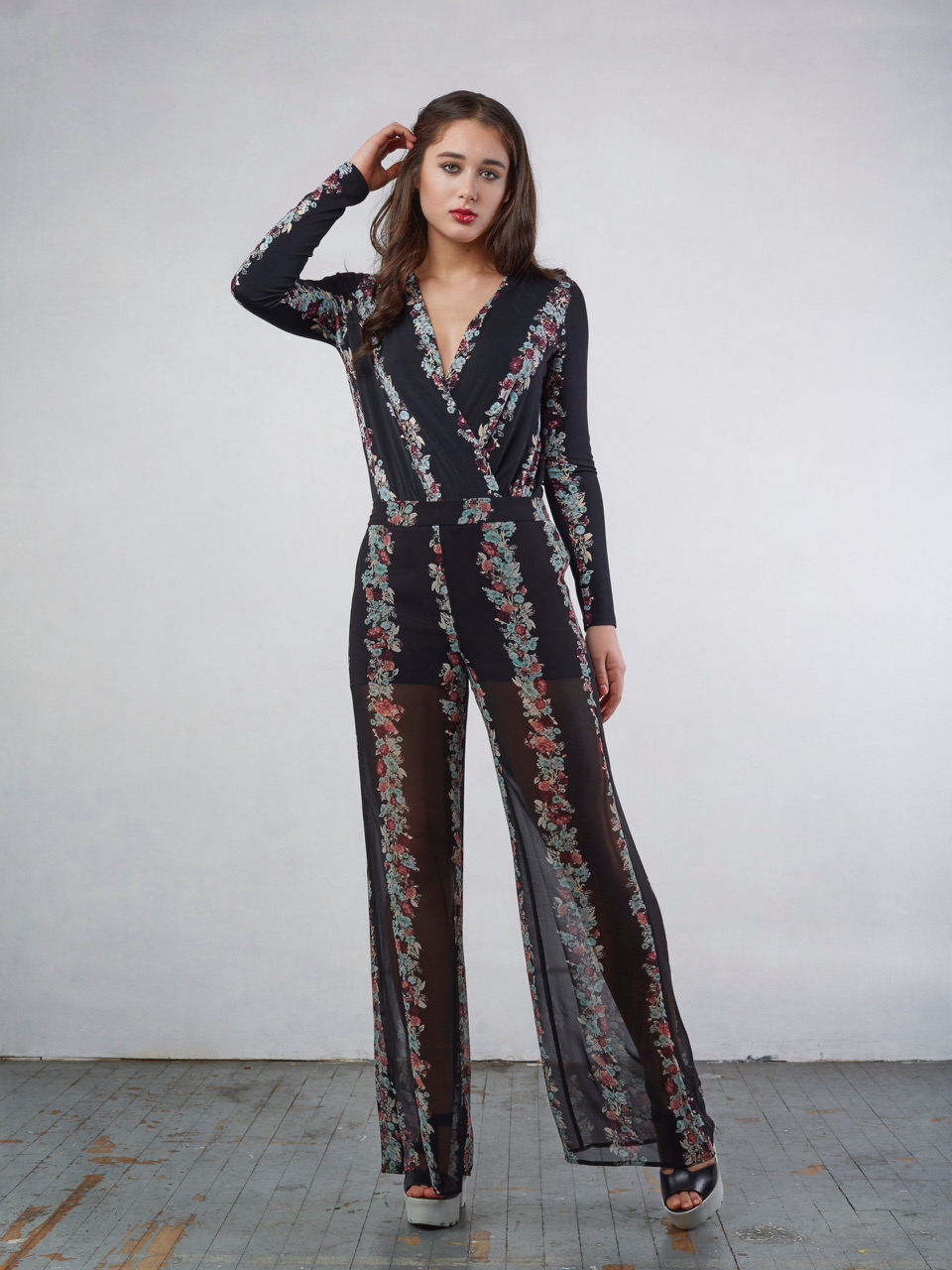Whether it’s conducting innovative cancer research, modeling for established brands, or founding her own blog, Autumn Greco has done it all. In 2015, Greco was awarded a grant from the National Cancer Institute and sponsorship from L’Oreal USA to continue her research on leukemia. Furthermore, Greco advocates for women and girls across the globe to participate in STEM and will be featured in an upcoming web series entitled “Nerd Girls.” She also enjoys learning about fashion and proves that young women can be anything they want; in Greco’s case, she’s an accomplished scientist, model, and blogger, all at the mere age of 18. Currently, Greco is a sophomore at Stanford University, where she majors in Bioengineering.
In her Zeitgeist interview, the impressive teen shares everything from the surprising similarities between science and modeling to her advice for young women today. It is an honor to feature such an inspiring change-maker on The Zeitgeist this month.
First of all, not only are you a scientist, but you’re also a model and blogger. How do you balance all of your different interests and find the time to dedicate to each one?
I started modeling when I was nine and living in New York, and prior to college, I had more time to pursue that professionally. Now that I’m in college and have a full schedule studying engineering, however, I’ve definitely had to cut back on that time. Luckily, there are some on-campus magazines that feature some fashion editorials that are super fun to work on. This weekend, I’m actually doing a shoot for one of these magazines called MINT, and it’s a way for me to still stay involved because I remain passionate about modeling and fashion.
People often consider the words “science” and “modeling” to be polar opposites. Do you find any similarities between these two lines of work?
Yes, absolutely. They’re normally considered to be mutually exclusive. However, like in most industries, to be the best at something takes diligence, and you have to work extremely hard. In science, for example, it’s really about putting in the hours practicing and studying. For modeling, it’s also about studying– reading every fashion editorial, learning about the industry, and staying really in the loop and in tune with what’s happening. You have to pay attention to things like what covers are out, which models are being featured right now, what’s in for this season–staying on top of all of those things. In both of these industries, you have to be really involved in order to succeed.
How would you describe your personal sense of style?
My style is reflective of growing up in the city, and I take advantage of easy, transitional pieces. I’m really into layering right now, and I also love wearing booties and heels just for fun. I’m always on the go, and I sometimes incorporate some preppy elements, like dressing “business-casual” in a great blazer. Overall, it’s a mix of urban and preppy.
When did you first realize you wanted to conduct research? What inspired you?
I’d say it was in elementary school, around first or second grade. When the teacher conducted experiments, even though they were focused on small things like color changes or mixing two substances together, I thought, “Wow! This is really cool. I really like this.” Science has been my favorite subject since I was quite young, and I began pursuing more in-depth classes during my sophomore and junior years of high school. There was also an opportunity posted on the Teen Vogue Facebook page that said if you’re interested in scientific research, please reach out and let us know. So I filled out that form, and I got an email back, and it happened to be about the L’Oreal Women in Science Ceremony. L’Oreal has this grant program where they provide research funding, and I thought research would be a cool way to meet inspirational women in the field that one day I aspire to enter. At this event, I was able to talk to women who had already finished their undergrad years and were now pursuing science professionally and making a huge impact in their community and the world at large. Before then, I hadn’t really met scientists or engineers so that was a pivotal moment for me. After that program, I applied to a summer research institute at a cancer hospital in New York, and since then, I’ve found myself moving forward from that point and trying to build on my research experience.
You were awarded a sponsorship from L’Oreal USA to train in a lab with research fellows and were also given a grant from The National Cancer Association to further your analysis of leukemia. What were those experiences like?
It was definitely all new to me, and I had no idea what to expect going into it. All of the scientific research I’d seen before was from watching videos on YouTube *laughs* and I was eager to learn more, and working in this lab presented that opportunity. I was really optimistic, and after getting into the lab, I realized I could make an impact with hard work. My mentor helping me with the research I was doing summed it up well: she told me science is 95% frustration and 5% success. What’s so exciting about science, to me, is that there’s so much potential, and there’s always space to improve. It’s a giant problem you’re trying to solve day after day.
What were some challenges you encountered when first starting out, and how did you overcome them?
One particular microscope I was working in the lab with had to be in a dark room because I was looking for fluorescence. I was sitting in a pitch-black room for nearly five hours, just waiting for this bright light to show. I had to constantly adjust the microscope to see it, but I finally saw that light several hours later. In this crucial moment, I documented the images I was able to extract from the microscope, and in the next lab meeting, I presented the pictures to my mentor. I really stuck with it and worked hard. As for other experiences in science, it’s a lot of trial and error. I remember being frustrated at first with some of my experiments, but I just kept telling myself, “It’s okay. I can do it. I just need more time to learn.” Then, I was able to master the concept and put my frustrations toward something that would push me to do better.
In addition to everything else, you’re also a sophomore at Stanford. So far, what has been your favorite aspect of college?
Definitely meeting the people here; everyone around me is so passionate and excited about what they’re studying. It’s a great place to be. I’ve learned so much just from talking to my friends at night about their interests, and I’ve also made my best friends here, who I absolutely love. I’ve liked meeting older students, too, who’ve provided me with advice. More recently, I also joined a lab on campus that I’m spending the academic year in to study cancer diagnostics. My mentor’s super cool, he has a PhD, and he’s exposed me to more elements of cancer science that I’ve never really studied before. The mentorship I’ve been able to find here at Stanford has also been a very exciting aspect of college.
Who are some of your professional role models?
First of all, there’s an amazing platform called Built by Girls, and they have this program where they match girls who are 15-18 years old with advisors to learn about science and gain some professional experience. I was a part of the first round of that when they were testing it out in New York, and I was matched to Dr. Amanda Parkes, who studies fashion technology. She’s the epitome of mixing style with research, and she blends the two together so beautifully. She seamlessly incorporates it into her work and has collaborated with incredible brands. She even showed me circuits that were sown into a piece of fabric, which was particularly impressive. I had never seen anything like it before! She’s definitely a huge role model for me.
You’re passionate about advocating for more women and girls to enter STEM fields. How do you contribute to this cause and how can others help as well?
This past summer, I was fortunate enough to be able to serve as a teaching assistant for a biodesign program at Stanford. It’s geared toward rising high school seniors who are interested in finding solutions to unmet needs in healthcare. The program brought in students who hadn’t had much experience in bioengineering and many of them discovered they love science. To me, what advocacy really looks like is visibility– showing that there are people who look like me who are following their dreams in science. That’s a very crucial part of it.
What piece of advice do you have to share with young girls today?
For women who are entering fields that have been traditionally dominated by men, it’s very easy to feel self-doubt and question our career path that we’ve envisioned in our minds for whatever reason. It’s common to feel that you should try something else, but it’s important to really stick to your gut feeling and follow your heart. If you can, have a meaningful chat with someone you admire in the industry you want to go into and find out what their professional experience has been like. It’s all about looking forward, picturing yourself in their shoes, and not feeling held back by the doubt you may feel.

You’re going to be featured in “Nerd Girls,” a brand new web series. Can you share anything about the project?
Yeah! I flew to LA last year from Stanford to film an episode for “Nerd Girls,” which is a talk show that features everyone from people just getting started in science to those who currently hold full-time engineering positions at various companies. I was fortunate to be interviewed on the show, which is co-produced by an Oscar and Emmy-nominated filmmaker. That was another inspiring component of the show. Being on set with people who are total visionaries and want to make STEM a key part of the media to expose girls to science was fantastic.
Finally, we have to discuss “Law and Order: SVU,” our mutual favorite TV show. Who’s your favorite character?
Detective Olivia Benson! She’s incredible, and every time I see her on the show, she gives a full effort every time and delivers beautifully. That’s super inspiring. I was also watching an interview of [Mariska Hargitay] the other day, and she was talking about how some of her character’s traits have become part of her personality. I thought it was awesome that in nearly 20 years of working on that show, Olivia has become such a big part of her. I also appreciate that Mariska gives back to the Joyful Heart Foundation.
What’s next for you?
The lab I just joined is focused on cancer diagnostics for liver and colon cancer, so that’s how I am spending my time right now. This is a new field for me because prior to this, I had most of my experience in the therapeutic aspects of cancer research. Seeing the other side and working on the prevention is super exciting. What’s next for me is working on publications, continuing my research, and of course getting more exposure in labs and coursework. As for post-grad plans, I’m not sure what they are yet. I’m just taking it year by year. So far, I’ve been thrilled with the experiences I’ve had in bioengineering and science.
